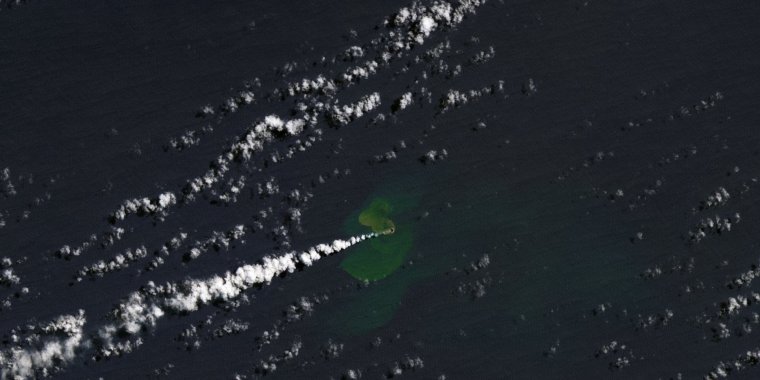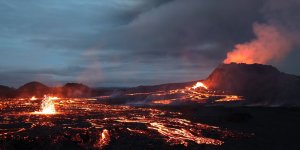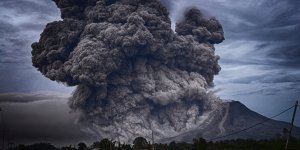| News / World News |
The underwater volcano has again created a small island
In the southwest Pacific Ocean, a seafloor ridge that stretches from New Zealand to Tonga has the highest density of underwater volcanoes in the world. On September 10, 2022, one of them awoke. In the days since, the Home Reef seamount in the Central Tonga Islands has repeatedly oozed lava, ejected plumes of steam and ash, and discolored the surrounding water.

Home Reef. Photo: Lauren Dauphin, using Landsat data from the U.S. Geological Survey
Eleven hours after the eruption began, a new island rose above the water surface.
The Operational Land Imager-2 (OLI-2) on Landsat 9 captured this natural-color view of the young island on September 14, 2022, as plumes of discolored water circulated nearby.
Previous research suggests that these plumes of superheated, acidic seawater contain particulate matter, volcanic rock fragments, and sulfur.
On September 14, researchers with Tonga Geological Services estimated the area of the island to be 4,000 square meters (1 acre) and the elevation to be 10 meters (33 feet) above sea level. By September 20, the island had grown to cover 24,000 square meters (6 acres).
The new island is located southwest of Late Island, northeast of Hunga Tonga-Hunga Ha‘apai, and northwest of Mo‘unga‘one.
Home Reef sits within the Tonga-Kermadec subduction zone, an area where three tectonic plates are colliding at the fastest converging boundary in the world.
The Pacific Plate here is sinking beneath two other small plates, yielding one of Earth’s deepest trenches and most active volcanic arcs.
Islands created by submarine volcanoes are often short-lived, though they occasionally persist for years. Home Reef has had four recorded periods of eruptions, including events in 1852 and 1857.
Small islands temporarily formed after both events, and eruptions in 1984 and 2006 produced ephemeral islands with cliffs that were 50 to 70 meters high.
An island created by a 12-day eruption from nearby Late‘iki Volcano in 2020 washed away after two months, while an earlier island created in 1995 by the same volcano remained for 25 years.
“The volcano poses low risks to the aviation community and the residents of Vava‘u and Ha‘apai,” the Tonga Geological Service said in an update issued on September 20.
“All mariners are, however, advised to sail beyond 4 kilometers away from Home Reef until further notice.” The service noted that most ash should fall within a few kilometers of the vent. (NASA Earth Observatory)
YOU MAY ALSO LIKE





